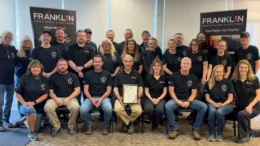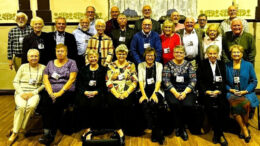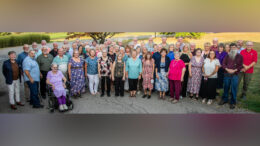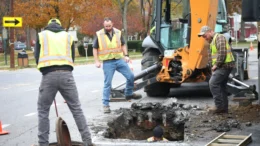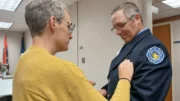The current ambulance service crisis in the region was the focus of discussion during a forum Wednesday at Grove City High School that drew a crowd of about 60 people.
Dan Basnak of the Emergency Care Ambulance Service said “we have a limited number of providers and that number has only gotten worse since the pandemic. It has gotten to the point that help may not always be there.”
Douglas Dick of Superior Ambulance Service said the situation is a global problem.
Basnak said the problems across the state include increased operational costs, poor reimbursements from healthcare insurance, a lack of financial support from communities and the limited number of EMS providers.
The Northwest Regional EMS Task Force — which includes Mercer, Crawford, Erie, Forest, Venango and Clarion counties — has reviewed the problem for the last few years.
Dick said there is no type of funding system in place for the provisions of 24 hour a day, seven day a week, 365-day readiness.
“EMS requests just don’t happen from 8 to 4, Monday through Friday,” he said.
Dick said that when a patient is transported to a hospital, the reimbursement is often below the cost of providing service.
“Not all patients have the ability to pay due to the lack of insurance coverage but they still receive the service,” he said.
“All of these responses incur cost for the ambulance service yet there is no means to recoup the cost,” said Dick.
Three methods of easing the crisis were reviewed at Wednesday’s forum.
The first method is a property tax that is directed toward an ambulance service. It is permissible under the state code for townships and boroughs to collect real estate millage, and Dick said the rate runs from a half mill up to two mills.
Dick said the responsibility falls on townships and boroughs and a county can’t take the lead to resolve the issue.
The second method would be a local service tax for ambulance services, and the third is a contracted fee per residence for ambulance service, similar to a fee for garbage collection.
Long term funding proposals included an additional cell phone fee that would go directly to the EMS system. An additional vehicle registration plate fee could also go directly to EMS.
And a one percent sales tax would be a larger sum per county and could go to both EMS and fire services.
“This job changes you at the core,” said Michelle Eaton, director of education at Superior Ambulance Service. “Unless things change there soon will be no one to answer the calls for help.”
“We have been facing this problem for the past five years,” said Clarion County commissioner Ed Heasley. “The problem is that, sooner or later, a 9-1-1 dispatcher will have no one to send on an emergency call. I would like to review some of the solutions presented here tonight. What we have now is failing and has been failing. It is time to touch base with reality.”








